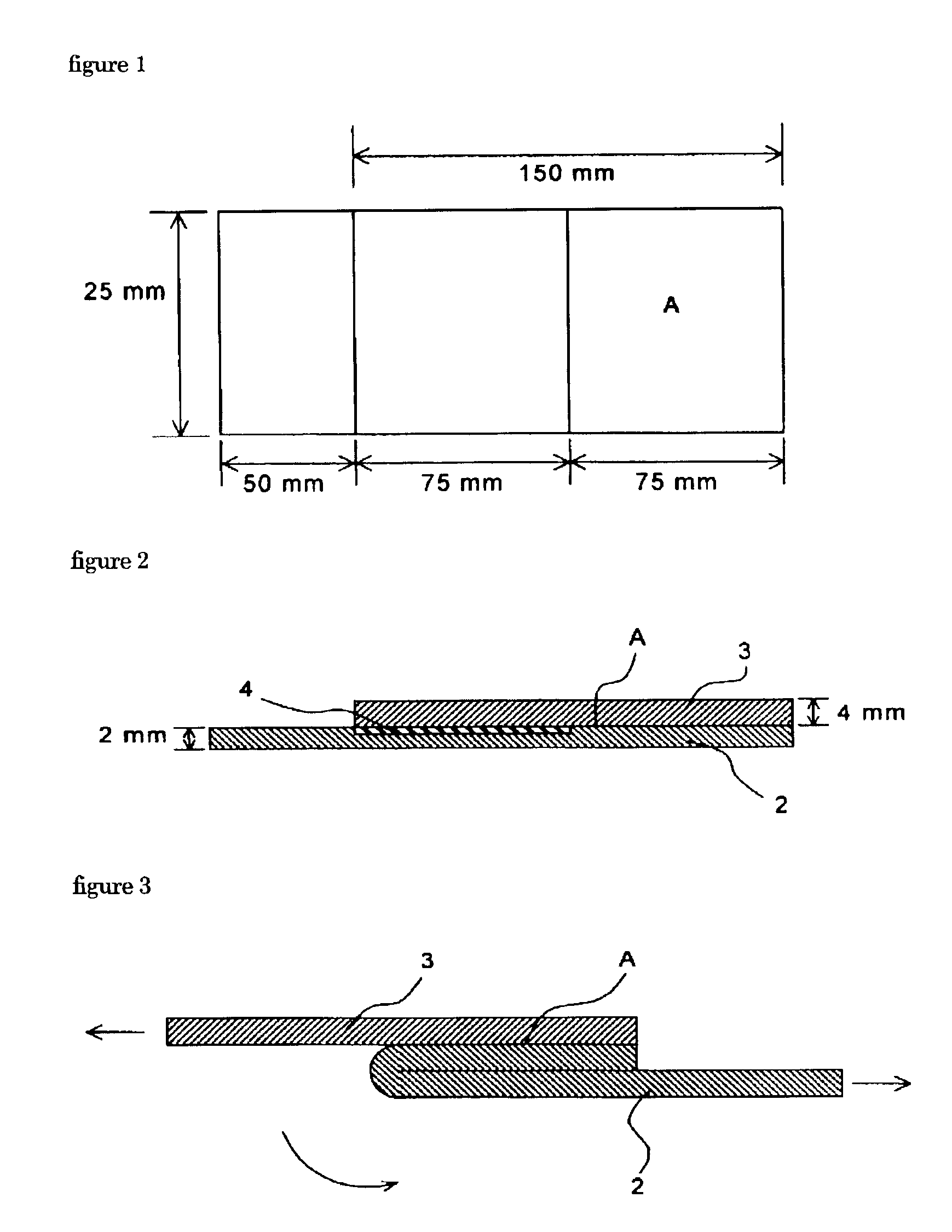Thermoplastic elastomer composition, formed article of the same and composite formed article of the same
a technology of elastomer composition and hydrogenated block, which is applied in the direction of film/foil adhesive, plastic/resin/waxes insulators, organic insulators, etc., can solve the problems of insufficient permanent compression, loss of mechanical strength, and rubber characteristics of the elastomer containing the hydrogenated block copolymer, etc., to achieve excellent softness, low melting point and melt viscosity, and permanent compression set and moldability
- Summary
- Abstract
- Description
- Claims
- Application Information
AI Technical Summary
Benefits of technology
Problems solved by technology
Method used
Image
Examples
examples
[0083]The present invention is described in more detail in the following EXAMPLES and COMPARATIVE EXAMPLES, which by no means limit the present invention
[0084]The properties of each composition were determined by the following methods (JIS being an abbreviation for Japanese Industrial Standard):[0085](1) Specific gravity was determined in accordance with JIS K-7112 for a 1 mm thick pressed sheet.[0086](2) Hardness was determined in accordance with JIS K-7215 for a 6.3 mm thick pressed sheet using a durometer (hardness type A).[0087](3) Tensile strength was determined in accordance with JIS K-6301 for a 1 mm thick pressed sheet punched into a No. 3 dumb-bell shape at a tensile speed of 500 mm / minute.[0088](4) 100% elongation stress was determined in accordance with JIS K-6301 for a 1 mm thick pressed sheet punched into a No. 3 dumb-bell shape at a tensile speed of 500 mm / minute.[0089](5) Breaking extension was determined in accordance with JIS K-6301 for a 1 mm thick pressed sheet pu...
examples 1 to 8
, and Comparative Examples 1 to 16
[0126]The components shown in Tables 1 to 4 were method / kneaded into pellets by a twin screw extruder (L / D: 47) at 180° C. with 350 rpm as the screw speed. The resultant pellets were injection-molded to prepare test pieces which were tested for various characteristics. The results are given in Tables 1 to 4.
[0127]
TABLE 1EXAMPLES1234Compo-Component (a-1) SEPSParts by weight100100100100sitionComponent (b) PW90Parts by weight100100100100Component (c-1) Endex155Parts by weight2010020Component (c-2) Kristalex 5140Parts by weight015250Component (d) PeroxideParts by weight0.150.150.150Component (e) NK Ester 3GParts by weight02.02.00Component (g) AntioxidantParts by weight00.40.40Evalu-Specific gravity0.900.910.920.92ationHardnessHDA31352827resultsTensile strengthMPa6.57.27.97.5Stress at 100% elongationMPa1.01.01.30.8Breaking extension%650580510890Permanent compression set%25212320(70° C. × 22 hrs)Resistance to bleedingVisual⊚⊚⊚◯(70° C. × 168 hrs, after ...
PUM
| Property | Measurement | Unit |
|---|---|---|
| Temperature | aaaaa | aaaaa |
| Percent by mass | aaaaa | aaaaa |
| Percent by mass | aaaaa | aaaaa |
Abstract
Description
Claims
Application Information
 Login to View More
Login to View More - R&D
- Intellectual Property
- Life Sciences
- Materials
- Tech Scout
- Unparalleled Data Quality
- Higher Quality Content
- 60% Fewer Hallucinations
Browse by: Latest US Patents, China's latest patents, Technical Efficacy Thesaurus, Application Domain, Technology Topic, Popular Technical Reports.
© 2025 PatSnap. All rights reserved.Legal|Privacy policy|Modern Slavery Act Transparency Statement|Sitemap|About US| Contact US: help@patsnap.com

